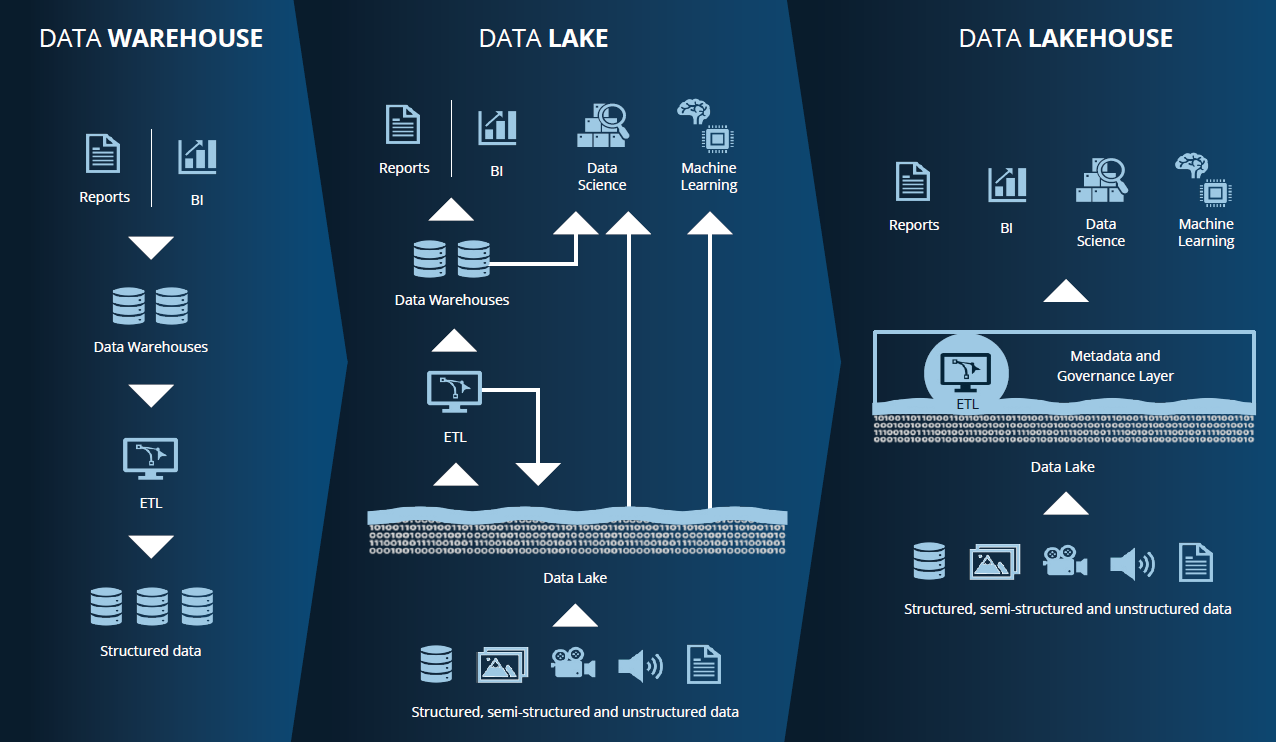Your Data Platform Isn’t Aligned With Today’s Demands
Many organisations invested heavily in their data architecture – whether it was a centralised data lake, cloud data warehouse, or reporting layer. At the time, it aligned with business goals.
But demands have evolved.
The rise of AI, real-time analytics, and the expectation of business-wide data access has exposed gaps in traditional architectures. What once worked is now holding organisations back – slowing down innovation, increasing operational costs, and creating frustration across the business.
Why Existing Platforms Struggle to Deliver
Platforms built for storage - not for analytics at scale
Inconsistent integration and governance across tools
Low platform adoption and manual data workarounds
Expensive, hard-to-maintain infrastructure
No clear roadmap to align with AI and business demands
What is Lakehouse Architecture?

Modern data architecture is designed to support agility, scale, and advanced analytics. Increasingly, organisations are adopting Lakehouse Architecture – a model that combines the flexibility of a data lake with the performance of a data warehouse.
Why a Lakehouse Matters Now
Lakehouse architecture has emerged as the preferred model for organisations aiming to unify fragmented data environments and support both analytics and AI workloads. It provides a future-proof framework without requiring businesses to abandon everything they’ve already built.
Organisations that previously invested in traditional data warehouses or data lakes now find themselves at a crossroads – needing greater flexibility, scalability, and real-time capabilities. A Lakehouse offers a way forward by building on these existing investments.
Know where you stand and what to do next
The Pivot to Lakehouse Assessment examines your current environment to identify structural, operational, and strategic limitations that could prevent a successful shift to a Lakehouse model. The focus is on uncovering whether your platform can scale, integrate, and support the business demands of modern data and AI use cases.
You’ll be assessed across four core dimensions:
Platform Capability
Is your current architecture built to support the flexibility, performance, and scale of a Lakehouse environment – or is it still tied to legacy constraints?
Licensing and Tooling
Are your licensing models and tooling choices structured efficiently for processing, storage, and compute – both technically and financially?
Integration
Can your platform integrate seamlessly with existing business tools and workflows, enabling self-service and streamlined access to insights across the business?
IT Demand Management
Is your IT team equipped to invest in and manage the platform strategically, or are they stuck responding to reactive, manual requests that limit innovation?
Ready to get started?
What you will walk away with
Clarity. Direction. No Guesswork.
A maturity score and benchmark
Understand how your platform stacks up across architecture, integration, governance, and operations.
Optimisation opportunities
Find ways to enhance what you’ve already built, without starting over.
A detailed gap analysis
Identify what’s missing or underperforming, and why it matters.
A roadmap overview
Clear, prioritised next steps to help you pivot to a Lakehouse architecture with confidence.
THE WINDOW TO MODERNISE IS CLOSING
Data demands won’t wait. AI projects are moving forward. Business leaders are asking more of the platform – and legacy infrastructure is holding teams back.
This assessment gives you a low-effort, high-value way to step back, assess, and plan. So you can move forward with confidence, not complexity.
